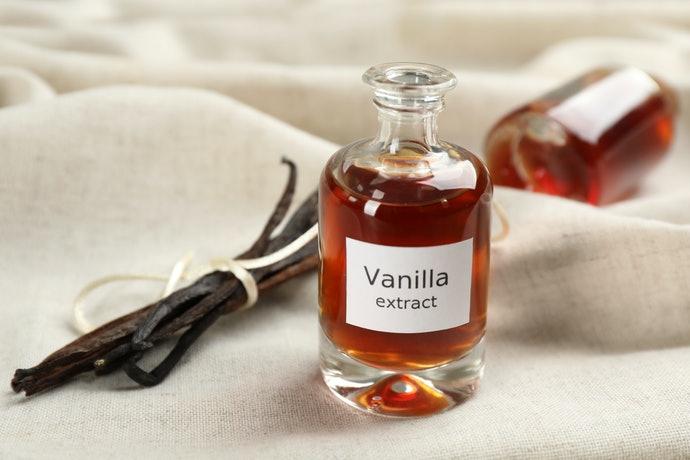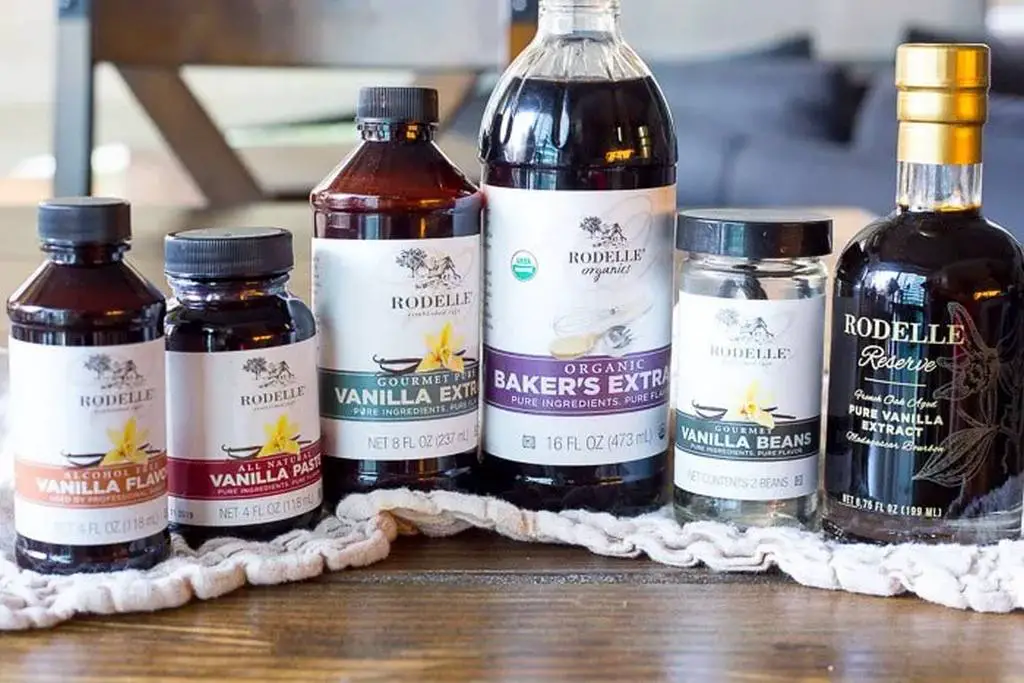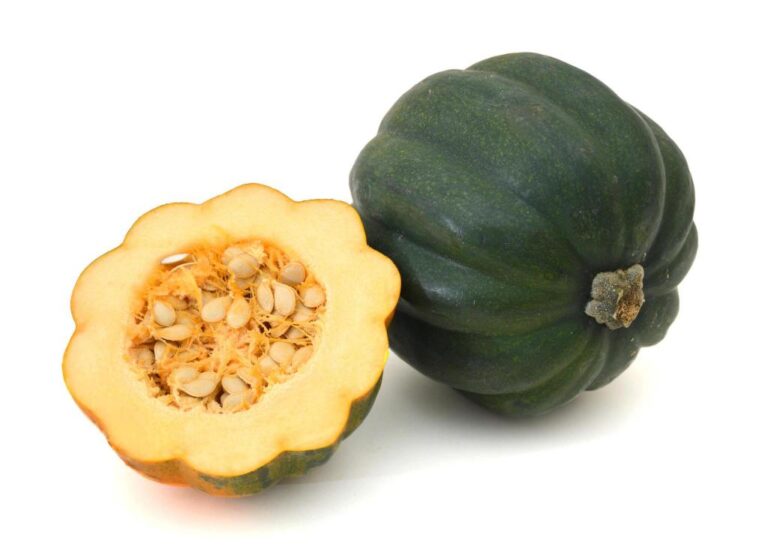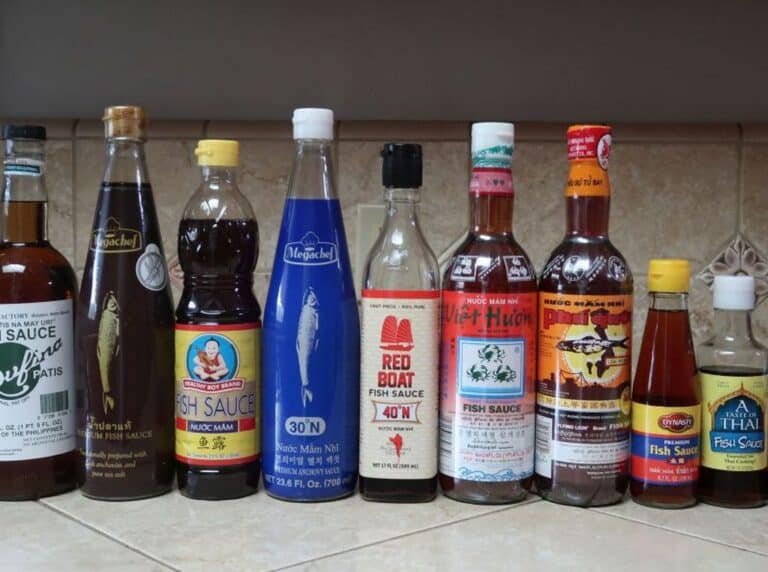How Much Vanilla Extract Is Too Much? Avoid Baking Mistakes

Vanilla extract is a staple ingredient in many baked goods, and it’s easy to understand why. The aroma and flavor of vanilla can add a delicious touch to cakes, cookies, and other treats. But if you add too much or too little vanilla extract to a recipe, your baked goods will either be too sweet or not have enough flavor.
Are you tired of your baked goods turning out bland or overly sweet? The solution to your baking woes may lie in understanding how much vanilla extract to use.
So, how much vanilla extract is too much? Most baking recipes call for a teaspoon to a tablespoon of vanilla extract or essence per dish. Do not go over this. If you are uncertain, begin with a teaspoonful.
In this article, we will explain why measuring vanilla extract is crucial to the success of your baking and find out how much is too much.
Whether you’re a seasoned baker or a novice cook, this article will give you the information you need to avoid common baking mistakes and create delicious treats every time.
So, let’s dive in and learn the ins and outs of vanilla extract measurements!
Why Vanilla Extract is Imporant in Baking
Vanilla extract is an essential ingredient in many baked goods, and for good reason. Not only does it add a subtle sweetness and depth of flavor to desserts, but it also helps to round out and balance other flavors in a recipe. But what exactly is vanilla extract, and why is it so important in baking?
Vanilla extract is made by soaking vanilla beans in alcohol, which pulls out the compounds that give the beans their flavor and smell. The liquid that comes out is a rich, amber-colored extract that adds vanilla flavor to both sweet and savory foods. In baking, vanilla extract is often used to enhance the flavor of cakes, cookies, and other desserts.
One of the reasons vanilla extract is so important in baking is that it helps to balance the sweetness of a recipe. Vanilla has a naturally sweet taste, but it’s not as strong as sugar, so it goes well with other sweeteners in a recipe.
In addition to that, vanilla extract is necessary for helping round out the flavors of other ingredients, such as chocolate or nuts, making for a more complex and satisfying taste experience.
Vanilla extract can add a subtle depth of flavor that can be hard to achieve with other ingredients. The rich, warm flavor of vanilla is hard to replicate with other flavorings, and it can help to give baked goods a more sophisticated taste.
Different Types of Vanilla Extract Available

It’s also worth noting that different types of vanilla extract are available depending on where it comes from, each with its own unique flavor profile. Vanilla extract from Madagascar, for example, is known for having a rich, creamy flavor, while vanilla extract from Mexico has a stronger, smokier flavor.
There are different kinds of vanilla extract based on their form, such as pure vanilla extract, imitation vanilla, and vanilla flavoring. Pure vanilla extract is made by steeping vanilla beans in alcohol, while imitation vanilla is made from a combination of artificial flavors and chemicals. Vanilla flavoring is similar to imitation vanilla but uses natural flavors.
1. Pure Vanilla Extract
Pure vanilla extract, which is made from real vanilla beans that have been soaked in alcohol, is thought to be the best vanilla extract. The alcohol helps get the flavor and smell of the vanilla beans out. This makes a flavor that is rich and complex and is often used in baking and cooking. It is generally considered to be the best choice for any recipe that calls for vanilla extract.
2. Imitation Vanilla Extract
Imitation vanilla is a cheaper alternative to pure vanilla extract and is often used in mass-produced baked goods and other processed foods. It is made from a mix of chemicals and artificial flavors, and even though it might taste like pure vanilla extract, it is not considered to be as good. Some people may be able to taste the difference between pure and imitation vanilla, especially in more delicate recipes.
3 Vanilla Flavoring
Vanilla flavoring is like fake vanilla, but it uses natural flavors instead of ones that are made in a lab. Even though it is thought to be better than fake vanilla, it may not have as much flavor as pure vanilla extract. Some people prefer vanilla flavoring for its natural ingredients, but it’s not as strong as pure vanilla extract, so you might need to use more to achieve the desired flavor.
In addition to these three types, you can also find vanilla paste, vanilla powder, vanilla sugar, vanilla beans, vanilla oleoresin, etc. They all have a similar taste profile, but the way they are used, preservation methods, and shelf lives vary.
Measuring Vanilla Extract Accurately
When baking, it’s important to measure the vanilla extract to make sure the final product has the right taste and smell. Using too much vanilla extract can cause a recipe to be too sweet or have an artificial flavor, while not using enough can result in a bland taste.
A few tricks and tips can aid in the accurate measurement of vanilla extract. One should use a measuring spoon made for liquids because it will give a more accurate reading.
Another is to use the “dip and sweep” method, which involves dipping the measuring spoon into the vanilla extract and then leveling it off with a straight edge.
It’s important to note that many recipes call for a teaspoon or tablespoon measurement, use a measuring spoon and not a regular spoon as they can vary in size.
How Much Vanilla Extract Is Too Much?
To get the right balance of taste and smell, it’s important to use the right amount of vanilla extract. Using too much vanilla extract can cause a recipe to be too sweet or have an artificial flavor, while not using enough can result in a bland taste.
A teaspoon to a tablespoon of vanilla essence or extract per dish is typically called for in baking recipes. Never go over it. If you are unsure, start with a teaspoonful.
Take note that the quality and strength of vanilla extract can vary. Some vanilla extract may be more potent than others, so it’s important to keep an eye on the flavor and aroma of the final product to ensure that it’s not too sweet or overpowering. Using a high-quality vanilla extract can also help to ensure a better flavor outcome.
WARNING
Take note that too much vanilla extract can also have negative effects on one’s health. Consuming large quantities of vanilla extract can cause nausea, vomiting, and even alcohol poisoning. This is why it’s important to be mindful of the amount of vanilla extract used in baking and not to exceed the recommended amount.
How to Adjust Recipes That Call for Too Much Vanilla Extract
When a recipe calls for too much vanilla extract, it can overpower the other flavors in the dish and make it taste too sweet. This can be frustrating, especially if you’ve spent a lot of time and effort on a recipe only to have it turn out poorly.
However, there are a few things you can do to adjust a recipe that calls for too much vanilla extract.
- The first thing you can try is to simply use less vanilla extract than the recipe calls for. If a recipe calls for one tablespoon of vanilla extract, for example, you might try using only a teaspoon or two instead. This will help to reduce the overall sweetness of the recipe and make the other flavors more prominent. Keep in mind that vanilla extract is a key flavoring agent, so you don’t want to reduce it too much, or the recipe will lack the vanilla flavor.
- Another option is to add more of the other ingredients in the recipe to balance out the sweetness. For example, if you’re making a cake and the recipe calls for too much vanilla extract, you could try adding more flour or sugar to balance out the sweetness. This can also help to make the recipe more moist if you reduce the vanilla extract.
- You want to try to add complementary flavors such as spices, nuts or chocolate chips. Adding a little bit of cinnamon, nutmeg, or allspice can help to balance out the sweetness of the vanilla extract when cooked and create a more complex flavor profile. Similarly, adding nuts or chocolate chips can help balance out the sweetness and add texture to the recipe.
- You may try to add a small amount of acidic ingredients such as lemon juice or vinegar. These ingredients can help to counteract the sweetness of the vanilla extract and bring balance to the overall flavor of the dish. Lemon juice is a popular ingredient to use as it can add a bright and refreshing flavor to a dish. It can also help to enhance the flavor of other ingredients, such as butter and sugar. Vinegar, on the other hand, can add a tangy and sharp flavor that can balance out the sweetness of the vanilla extract.
- Finally, another way to adjust recipes that call for too much vanilla extract is to make a vanilla syrup, where you mix vanilla extract with sugar and water and use it in small amounts. This way you can control the vanilla flavor in the recipe, and still have the sweet vanilla taste.






